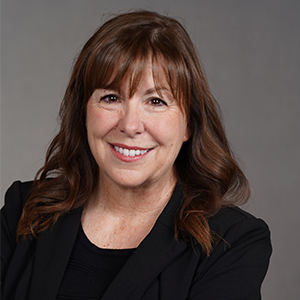Executive Conversations is a HousingWire web series that profiles powerful people in the financial industry, highlighting the operations and the people that make this sector tick. In the latest installment, we sit down with John Vong, co-founder and president of ComplianceEase, to discuss how regulatory changes will impact lenders through Big Data.
 What kind of impact do you think the CFPB’s proposed changes to HMDA are going to have on lenders?
What kind of impact do you think the CFPB’s proposed changes to HMDA are going to have on lenders?
Government agencies want bigger data and will be collecting more pieces of information if the proposed HMDA rules are approved. This means that the ‘submit by March 1 and you’re done’ approach won’t be sufficient anymore. The new rules will be critical for lenders to monitor on a regular basis as there will be increased regulatory compliance risk throughout the loan origination lifecycle. Previously, lenders had to collect and report about 30 data elements — under the proposed rule there would be many more. If loan pricing discretion, unintentional redlining or other fair lending violations have occurred, these critical data points could be cause for a fair lending review.
Which regulations require this bigger data, and what is the impact to lenders? This is a paradigm shift. Both state and federal regulators are taking a very close look at the lender by using remotely submitted data — regulators don’t even need to go into a lender’s office to know what they are doing. Lenders need to understand the significance of these regulatory changes. It will be easy for many lenders to underestimate the importance of HMDA because reporting has often been viewed as a strictly clerical exercise. More recently, state licensed lenders have been required to submit the Mortgage Call Report under the SAFE Act on a quarterly basis.
In addition, trying to comply with fair lending regulation these days has placed additional burden on lenders because there is no definitive fair lending threshold to measure their loans against. They have to maintain proof that they are not involved in discriminatory practices. But unlike other compliance areas, the regulators have not yet clearly defined the standards for what it means to be in compliance. There is some case law because of action taken by federal agencies against mortgage and auto creditors, but mortgage lenders have to be proactive and take a good look at what their lending practices reveal.
Lenders need to use intelligent compliance analysis tools to mine their loan production data and monitor the process from the beginning, otherwise they will be unwittingly exposed to a great deal of regulatory risk.
What is the biggest compliance challenge for your clients right now?
In a word: TILA-RESPA Integrated Disclosures (TRID). TRID dwarfs QM because the mortgage industry must overhaul its technology, including upgrading to new data formats required by GSEs and investors, such as MISMO 3.3, to fully implement TRID. Regulations aside, the move from MISMO version 2.x to 3.x is a major undertaking.
The majority of the technology in use by the industry is at least a generation out of date. Vendors will be making a lot of new updates to support the more dynamic requirements of the new loan estimate and closing disclosure forms. Then there are the inevitable updates to integrations, testing, and implementation — it’s a major overhaul of the mortgage system. For the first time, lenders are responsible for the accuracy of the closing disclosure, which means there will be a myriad of workflow changes between lenders and settlement agents. We have 10 months remaining until August of 2015, so there’s a really tight schedule to move from playing catch-up to being prepared.
How is ComplianceEase helping its clients with these regulations?
We are here to safeguard our clients. Our robust, web-based solutions capture and test for all quantifiable laws and regulations in residential mortgage lending. For TRID, once clients have the loan estimate or the closing disclosure, our data will identify any violations that occurred throughout the loan origination lifecycle. As a best practice, clients will audit their data using our integrated solutions before issuing loan disclosures, and along the way will check if any changes including changed circumstances may have triggered a tolerance violation.
I compare our suite of solutions to a virus scan that runs constantly on your laptop, constantly monitoring the regulatory compliance health of the loan.
What differentiates ComplianceEase from other similar companies?
The devil is in the details. Not all compliance engines are developed equally. Our sole focus is regulatory compliance risk management. I would suggest really looking at a system’s comprehensiveness as well as integration availability. We approach the management of compliance risk holistically using a suite of solutions that protects throughout the entire mortgage origination lifecycle, rather than just a specific practice area.
A lot of lenders think that if they run a report and pass, they are OK, but that’s no longer enough for regulators and investors. A compliance audit report or, for that matter, evidence that some sort of compliance management system is in place, are only as good as the comprehensiveness and the quality of the loan data collected and monitored. A lot of regulatory exams end with the final HUD-1 not matching up with previously run compliance audit reports because correct and current data was not used.
A lot of issues come up when the wrong data is passed to different systems. You might buy one system from one vendor, and a different system from another vendor, and they blame each other. The customer ends up suffering. Compliance is all we do, and we have developed a suite of products to offer the most complete testing. No one else can match our comprehensiveness. Three of the top five lenders have chosen to automate compliance with ComplianceEase with good reason.
Are you optimistic about the industry in the next year?
It’s tough to be optimistic because of the major challenges to origination processes and technology in use by the industry. With the new TRID rules, the lender will be made accountable for the accuracy of the closing disclosure. The creditor will be solely responsible so they must collaborate with settlement agents. The industry still does not have a good real-time communication network from lenders to settlement agents. There are many systems out there, but they’re not talking to each other yet. That communication system needs to be built and connected, so any changes at the last minute can be updated and relayed back to the lender to make a decision to approve. It’s very common to have last-minute changes in the terms, such as a courier fee or an inspection fee. Under the new regulations if you change the fee you have started the disclosure timing clock again. We’ve seen a lot of these changes in the last few years, but this will be a game changer. In the end, though, I am optimistic because I know that the right technology is available and the industry has a tremendous opportunity to improve the lending experience for borrowers.







